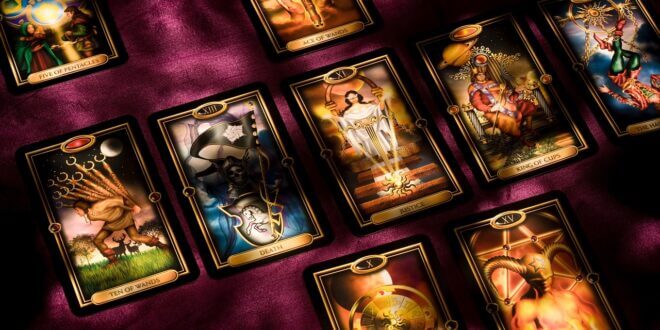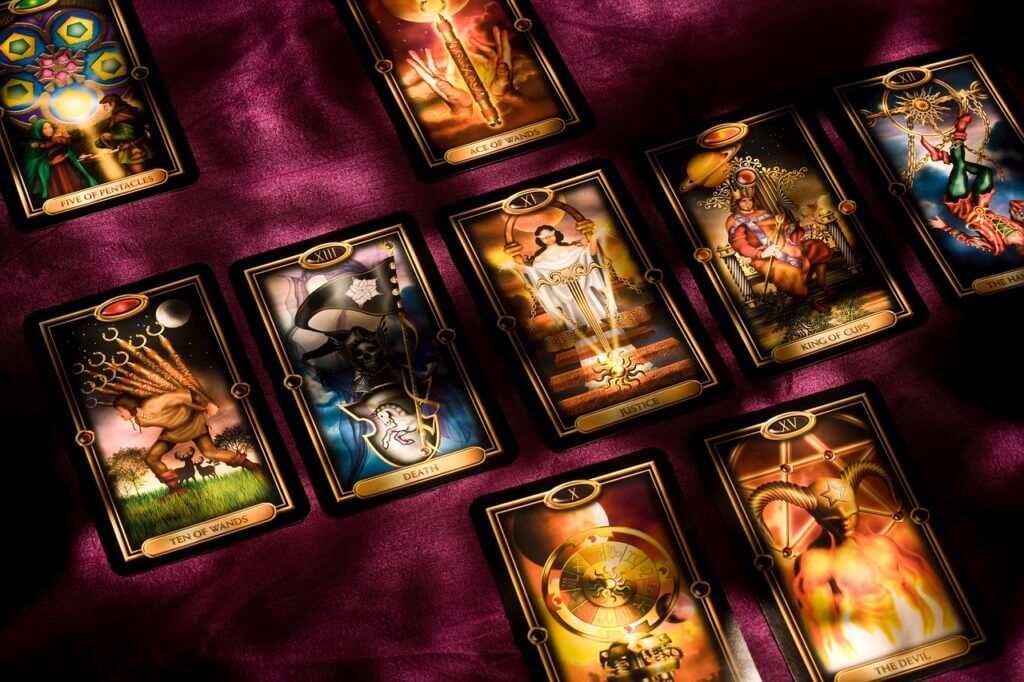Tarot and Story Telling
For writers, tarot provides a limitless source of inspiration for novels, non-fiction books, articles, screenplays, poems — anything you want to write. If you’re not a writer, you can use this article’s techniques as journaling exercises to help you discover yourself storytelling with tarot.
Tarot works as a source of inspiration because it links us directly to our unconscious mind — and our soul. Our unconscious mind “thinks” in images. Tarot helps us to decipher what our unconscious is trying to tell us.
Getting Started with Tarot Storytelling
The basic method is simple:
Decide what you want to do (your intention), and write down the answer;
Relax;
Pick a card (or cards); and
Freewrite.
Decide what you want to do
You can use these techniques at any stage of any writing project. Let’s say you’ve decided to write a novel.
You haven’t written long fiction before, and you’re feeling somewhat unsure of yourself. Compounding your uncertainty, you don’t have any idea of plot, character, or setting — you’re just going to start writing and see where the process takes you. If this describes you, take heart from the knowledge that writing is about discovery. You’ll find out what you’re writing as you write. Stephen King and many other popular novelists work in this way.
In the above situation, deciding what you want to do would be: “I want to start my novel.”
If you were deep into the project, your intention might be: “I want to learn more about my heroine,” or “What happens next?” or “How do I deepen the conflict between my hero and heroine?” You get the idea.
If you’re writing non-fiction, say an article, your intention might be: “I want an idea for an article for Magazine X,” or “Who can I interview to get more information?” or “What haven’t I considered in this article?”
Don’t spend too much time worrying about your intention. Ask yourself what you want to know, and write down the answer. Writing down the answer is important because it gives you a jumping-off point for your freewriting.
Relax
You have some notepaper or a notebook and pen, or you’ve turned your computer on, and you’ve written down what you want to do. Now it’s time to clear your mind.
If you do your writing work first thing in the morning, you won’t have to clear your mind of the day’s clutter. You’re not quite awake and still relaxed so you can skip the relaxation exercise. (If you haven’t tried writing first thing in the morning, try it for a few days. Many writing teachers recommend writing first thing in the morning.)
Sit comfortably, with your feet flat on the floor and your back straight. Place your hands on your knees.
Close your eyes, and take several deep breaths.
Now breathe for a couple of minutes. Don’t try to regulate your breathing; breathe naturally. Use abdominal breathing: focus on your tummy, expanding as you breathe in and relaxing as you exhale.
Pick a card (or cards)
After a few minutes, when you feel completely relaxed, open your eyes and shuffle your tarot cards. Decide how many cards you will select. (Select them facedown.) One card is fine, or you can select up to three cards.
Select your card or cards.
Place the cards face up on your desk.
Freewrite for ten minutes
Without thinking about it too much, free write for ten minutes, with the cards you’ve selected as a focus.
Freewriting is easy to do. Just write and keep writing for the time you’ve decided on: ten minutes, fifteen minutes, or half an hour. The idea is to write whatever comes into your head.
Keep your intention in mind and start by describing the card or cards. Then keep writing.
Using your freewriting
Your pages of freewriting are the raw material. You may be able to use them in your work, but the chances are that you won’t. It’s best to look at your freewriting as priming the pump. Freewriting, in this instance, is not meant to be an attempt at a first draft. It’s meant to loosen you up and let you access material that you can’t access in any other way.
Occasionally you will be able to use your freewriting as first draft material, but don’t aim for this. Keep in mind that freewriting is disposable. (I rarely even reread my freewriting, I trash it.)
Take a highlighter pen, and mark any words and sentences in your freewriting that are interesting, intriguing, or have a zing to them. Use these as a basis for your work.
Tarot Storytelling: Conclusion
If you want to do more freewriting, you can do that now or start work on your project.
 Sun Signs Everything Under The Sun!
Sun Signs Everything Under The Sun!

